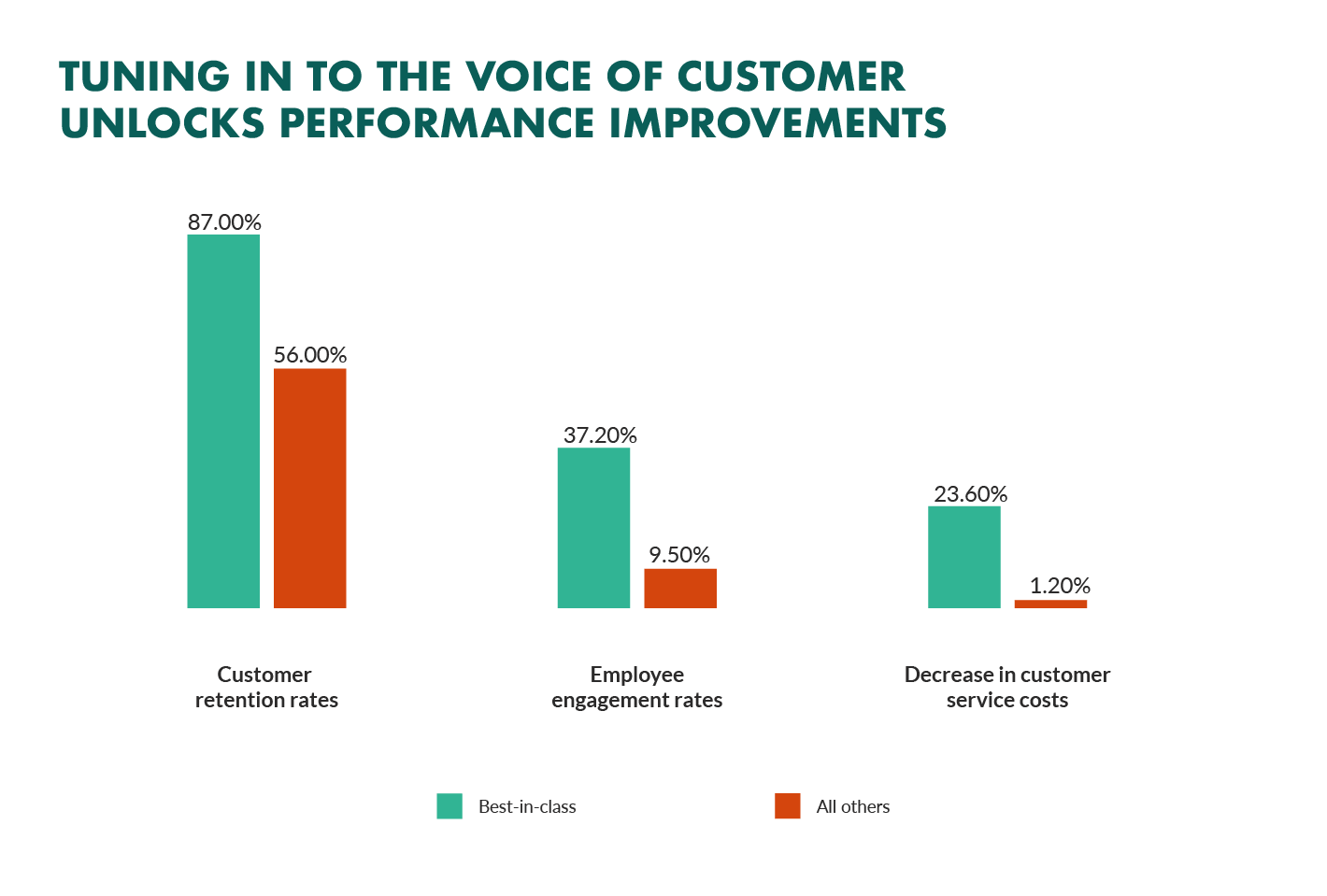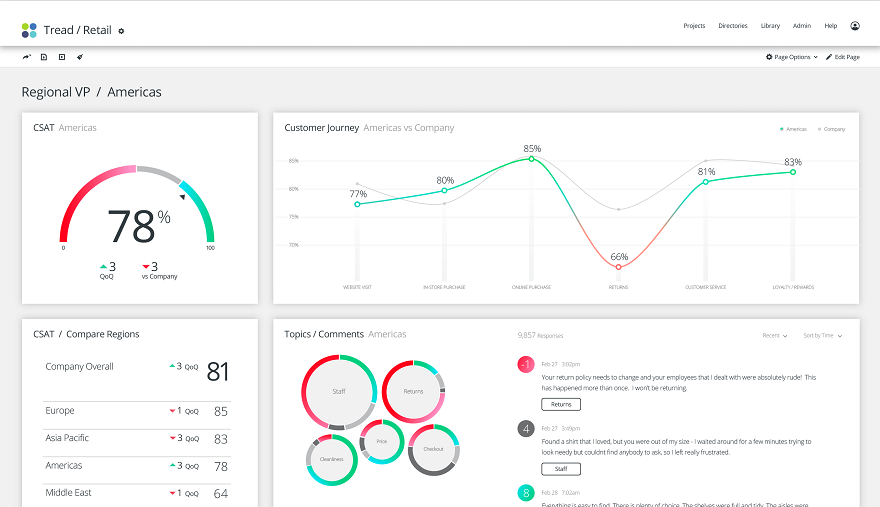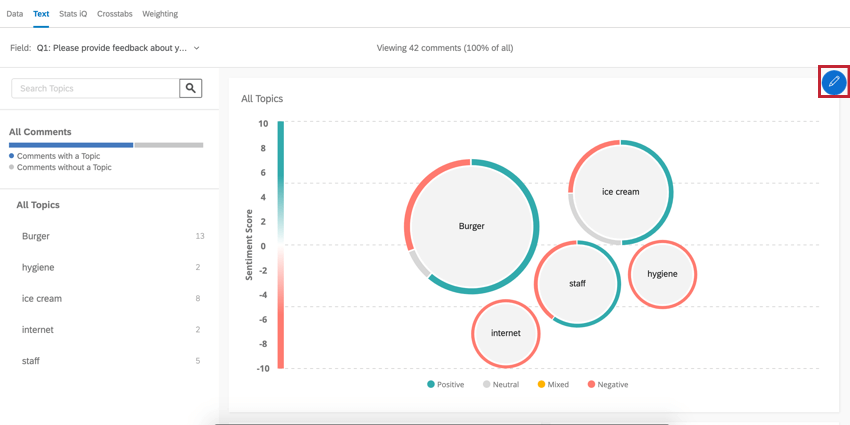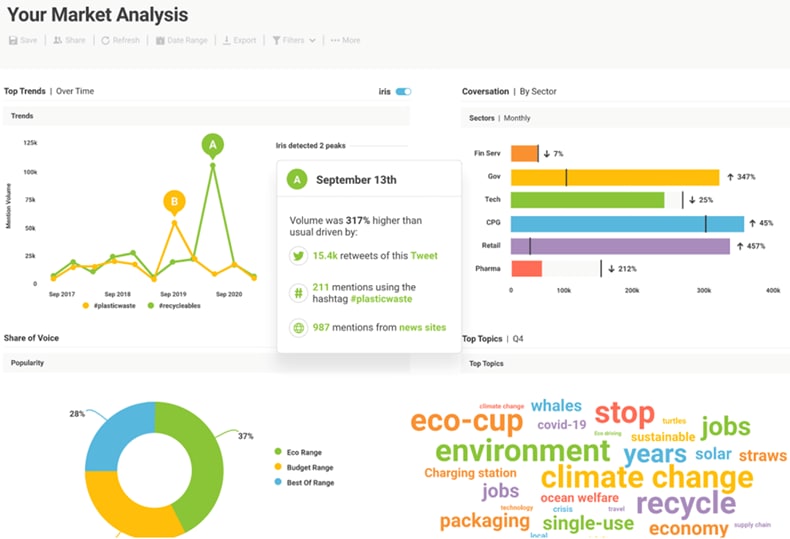Consumers are constantly evolving, and so are their needs and expectations. Businesses that will thrive in the long term are those that understand the needs of the changing customers and take positive actions to meet these needs.
Voice of the Customer (VoC) is a research method used to gather feedback on what customers think and feel about their experiences with a business and its products/services. The goal of a VoC program is to understand what the customers need and their expectations from a business.
Insights from VoC enable leadership teams to steer their business in a direction that helps the brand stay competitive, add more value and create loyal customers.
A study of 207 businesses by the Aberdeen Group revealed that companies that invest in customer feedback programs experience much higher client retention, employee engagement and spend less on customer service.

All companies in the research by the Aberdeen Group had VoC programs in place, however, the top-performing companies using VoC best practices retained 55% more clients compared to other companies (87% vs. 56%).
This means simply collecting customer feedback and tracking sentiments is not enough to achieve optimal results with a VoC program.
In this article I highlight 8 best practices that would supercharge your VoC program and deliver positive ROI.
#1. Choose the right VoC tool
A great VoC tool integrates feedback collection, analysis, distribution and action into a single platform. This makes it easy for an organization to understand and improve the customer experience.
Some VoC tools are focused on helping businesses collect customer feedback, others dive deeper into unstructured feedback data to provide insights, some are focused on reporting and analysis and some can do all of the above.
Choosing the right VoC tool for your business needs is important for the success of your VoC program. Some key features you should look out for in choosing a VoC tool include;
Robust survey features
A good VoC tool should make it easy to gather feedback through surveys, features such as language translation, Multichannel distribution options (Email, SMS, Social, Chat, Web) and Logic would make deploying surveys seamless and efficient.
Dashboards & Reporting
Having the ability to create or customize dashboards with available feedback data would make it easy to see how organizational CX metrics being tracked are performing at a glance.

A great VoC tool should be able to measure and display performance metrics from various VoC campaigns in real-time.
Ease of integration
Choose a VoC solution that would be easy to integrate with legacy systems existing within your organization. This is very important in order to achieve automation of feedback collection and trigger-based events in your VoC program.
Data security
Your VoC solution will have to handle a lot of sensitive business and customer data. Ensure the solution chosen have adequate security measures to keep this information safe and secure.
Text analytics
Customer feedback from your VoC program will contain both structured and unstructured data. While it is relatively easy to analyze structured feedback data, analyzing unstructured feedback is not a walk in the park and it cannot be overlooked.

A VoC tool with an NLP (Natural Language Processing) engine to help in the analysis of unstructured feedback data will save you a lot of time in analyzing open response texts and identifying key action items.
#2. Collaborate with other teams
A great Voice of Customer (VoC) program is never run in a silo. To get the best out of your VoC efforts you need to collaborate with other teams/departments within your organization to create feedback surveys, organize customer forums and implement action items from your VoC program.
It is essential that feedback from the VoC program is visible to everyone within organization. This would help in creating awareness throughout the business on the customers’ needs, pain points and preferences.
#3. Look beyond surveys
Your VoC program should not be limited to customer surveys, consider other sources of customer feedback such as social media, complaints, 3rd party review sites e.t.c

Considering feedback from these sources in the program gives a more accurate view of what customers really think about your brand (and its products/services), as well as areas where you are failing to meet their expectations.
#4. Personalize your VoC campaigns
Your VoC campaigns should be personalized to drive customer engagement and participation. The goal here is to create strong communication ties with the customer through personalized interactions. This goes beyond using their names in content.
As much as possible, you should engage the customers in your VoC program right after they have had an experience or interaction with your business.
Ask the customers questions that are relevant to them. For instance, asking customers who never registered to use your mobile app to give feedback on their experience with the app would likely put them off from sharing any feedback.
#5. Do Not Neglect Employee Feedback.
While getting feedback from your customers is important, you should also hear from your employees. Without employee feedback, the business will have a blind spot in understanding the customer experience and in achieving positive business outcomes.
For instance, Feedback from customers might point you to processes that are not working, but employee feedback will reveal insights as to why those processes are not working. Considering the Voice of Employees (VoE) and their perspectives often reveal unique and powerful insights.
Conclusion
A well designed Voice of the Customer program will provide a priceless glimpse into the customers’ mind. This helps businesses understand the customer needs, expectations, perceptions, and pain points from their experiences with the brand, wherever they are in the customer journey.
These insights drive crucial initiatives that impact positively on long term growth and profitability. See three more best practices for a successful Voice of The Customer (VoC) program here



